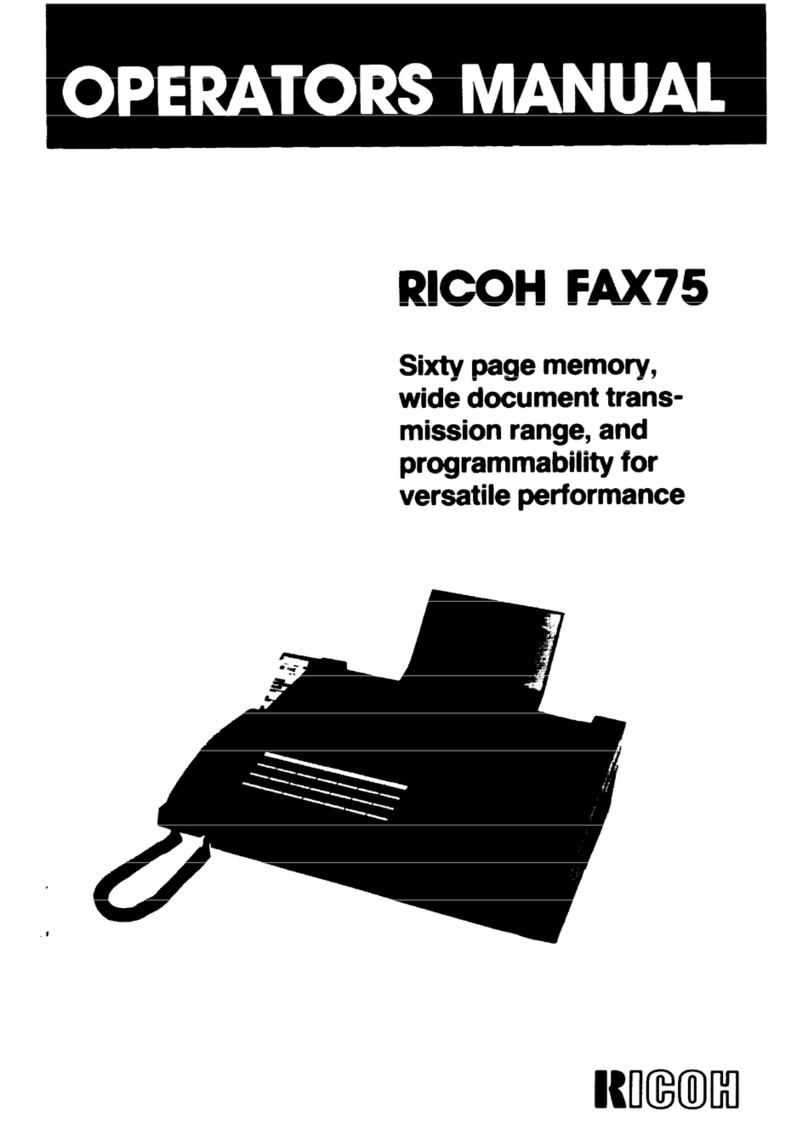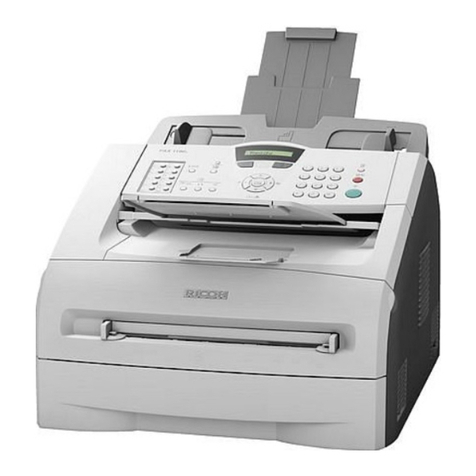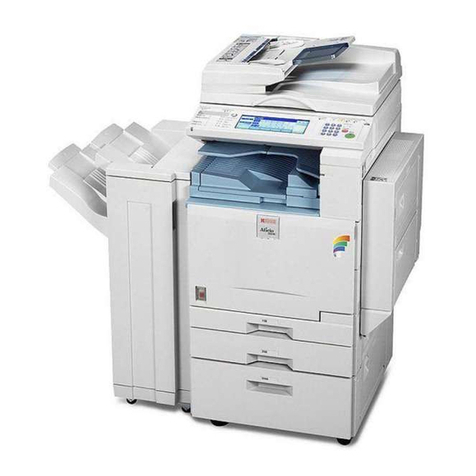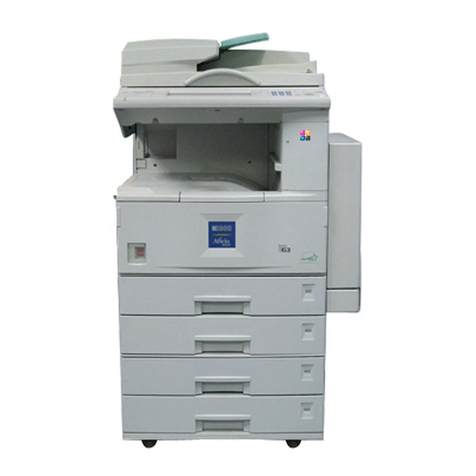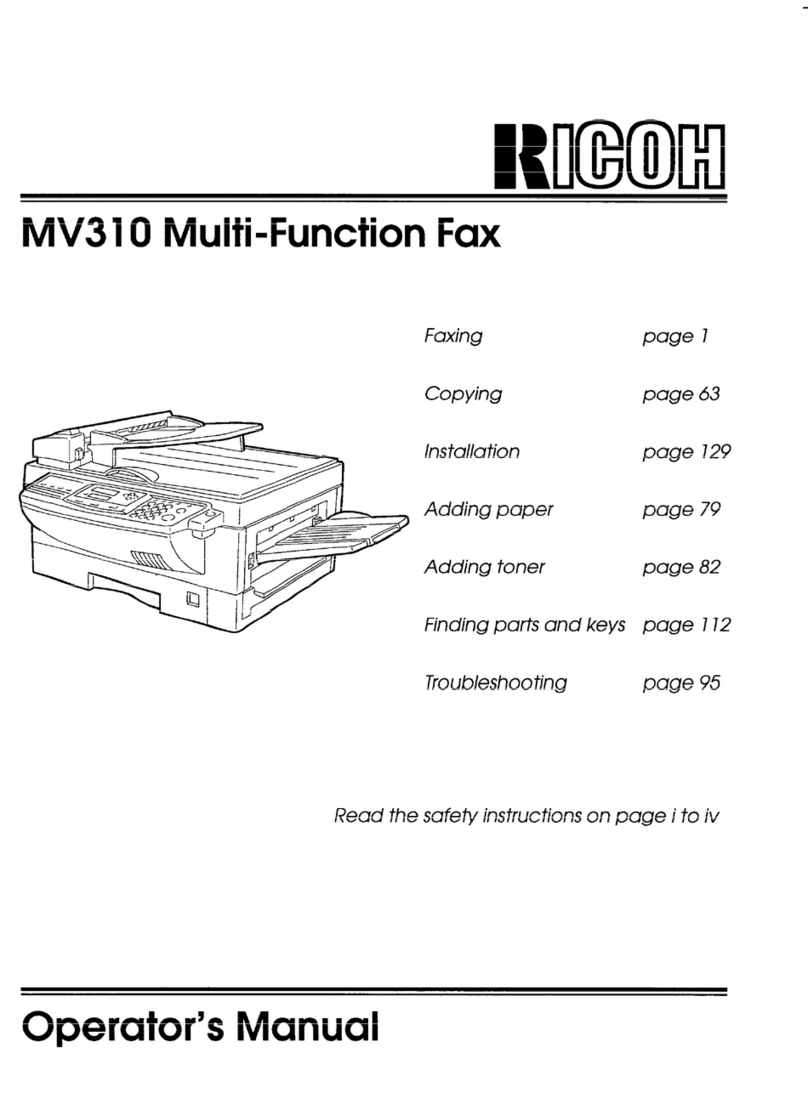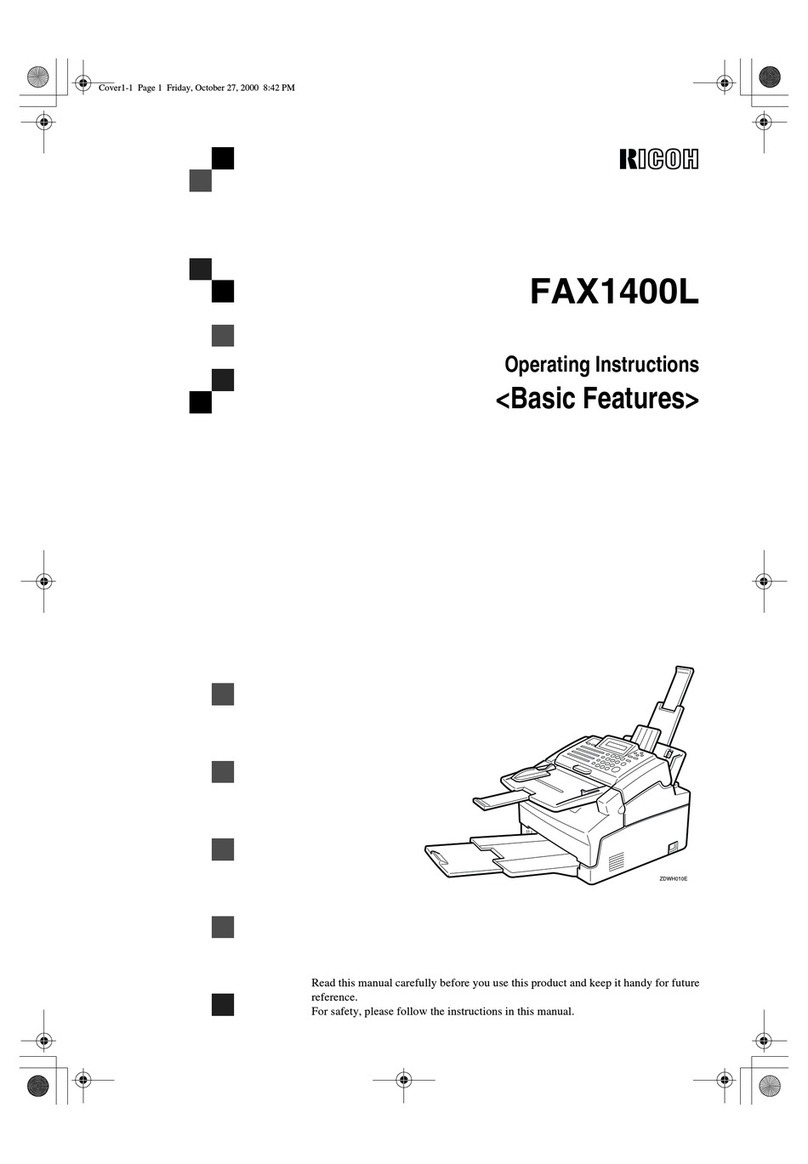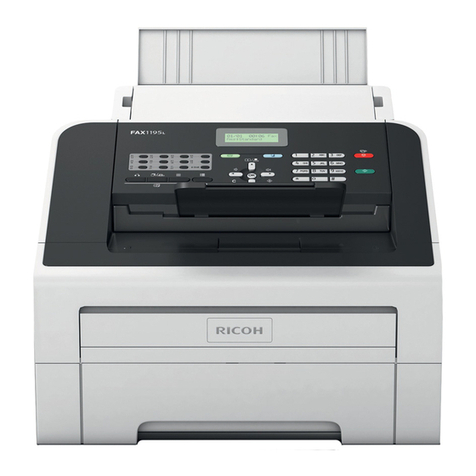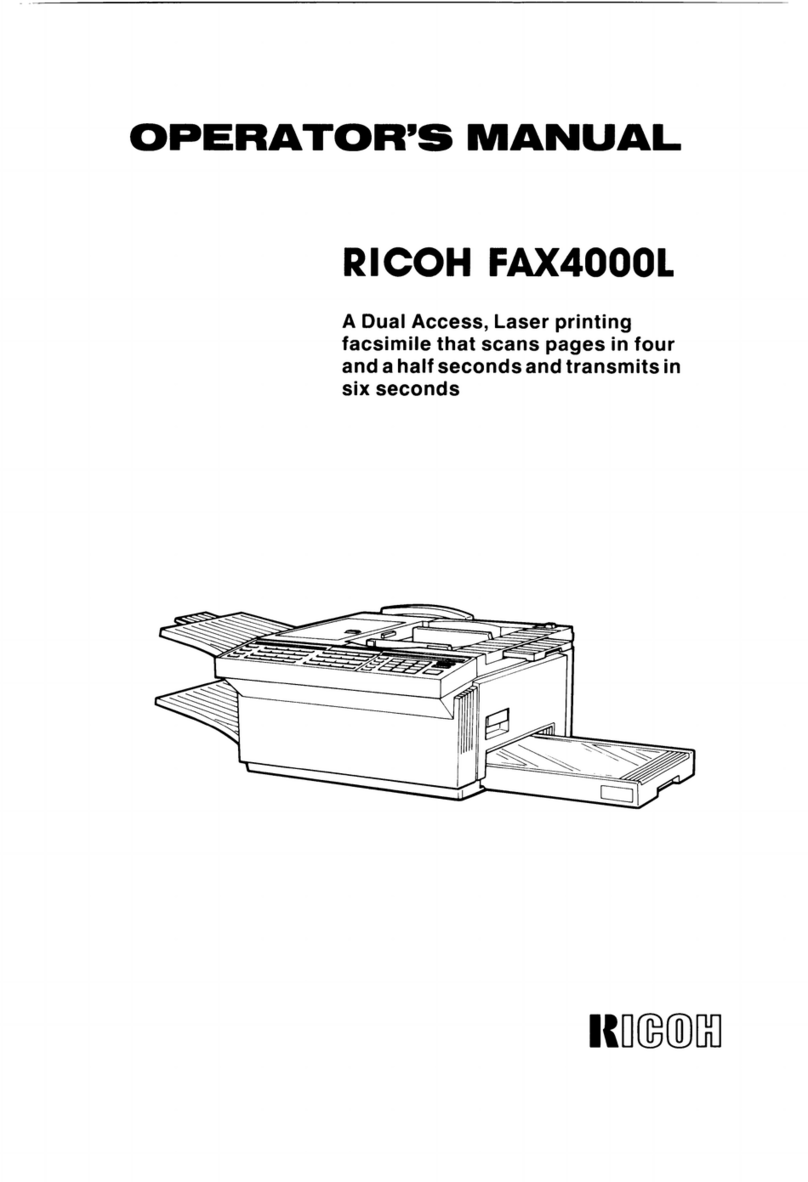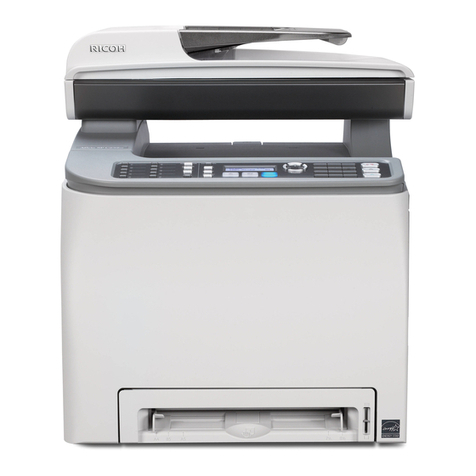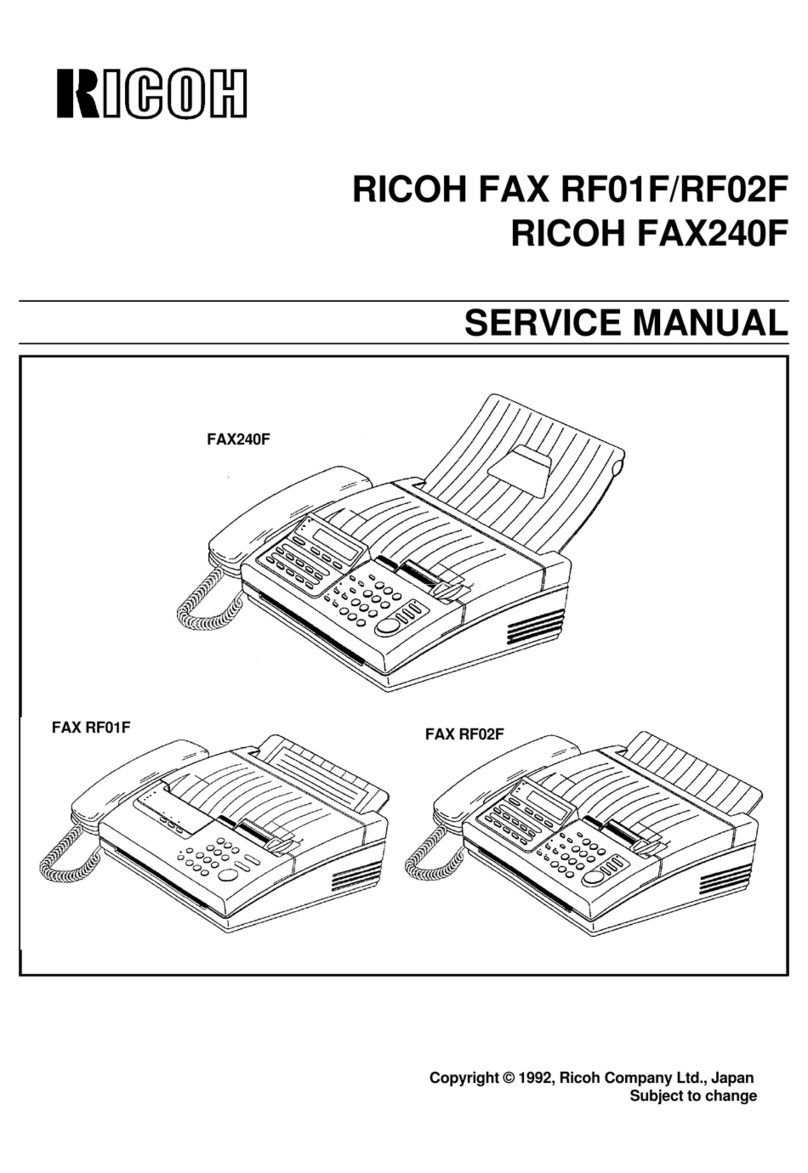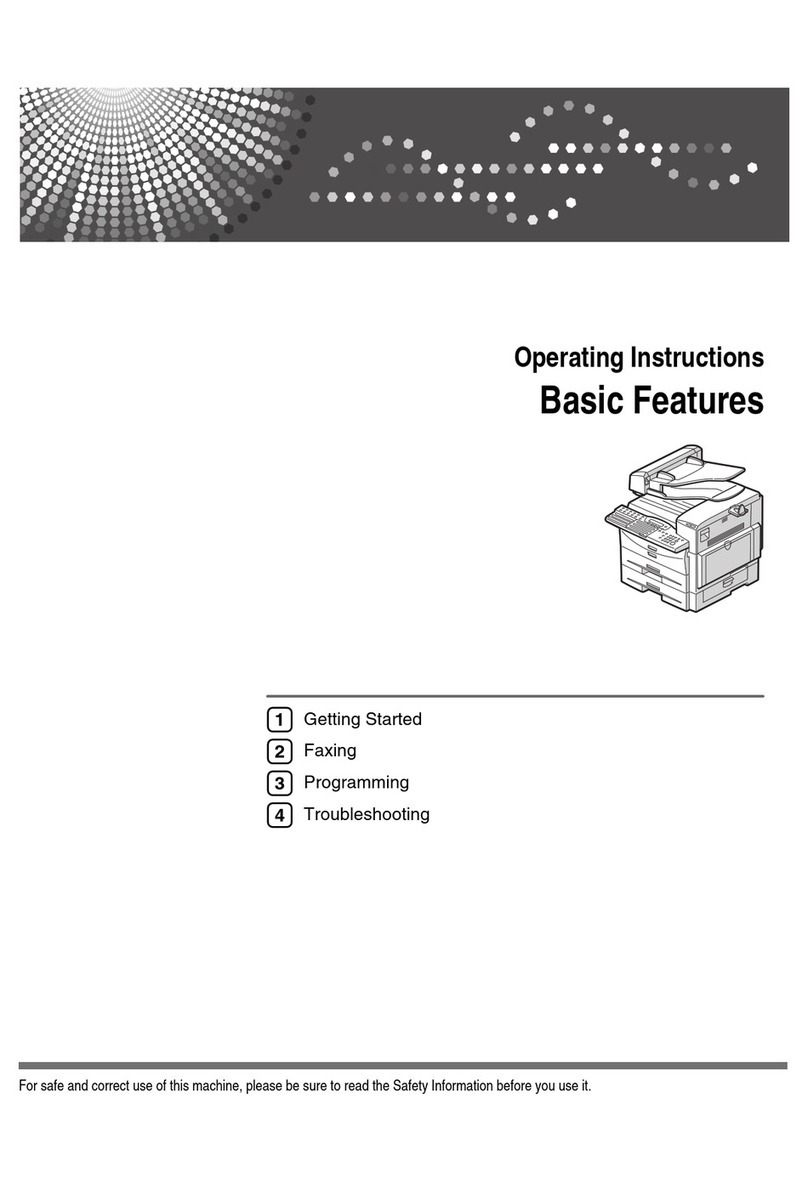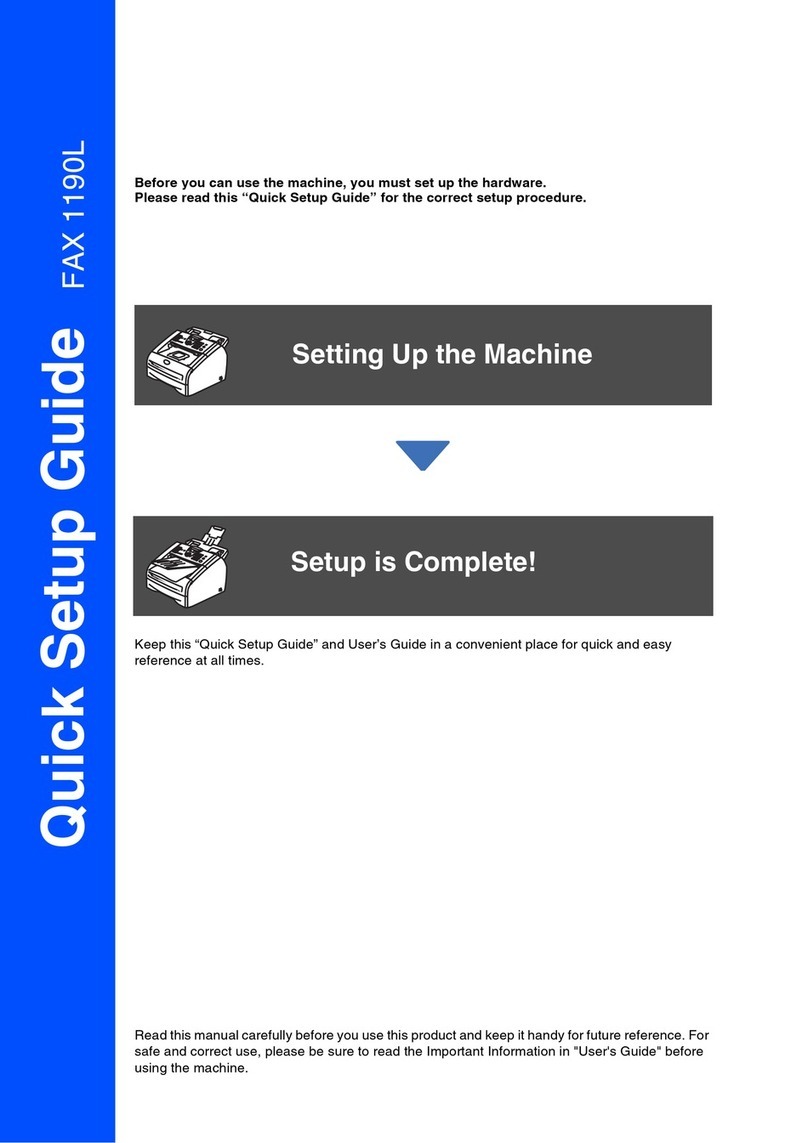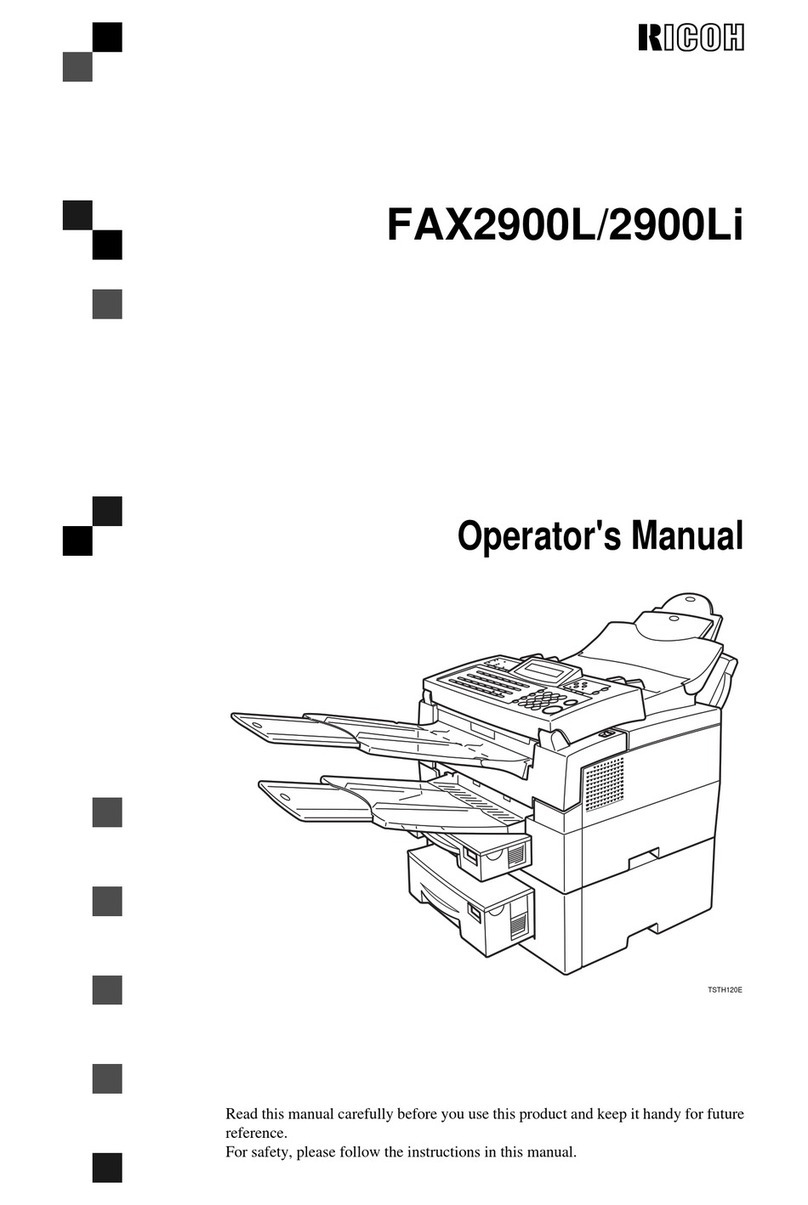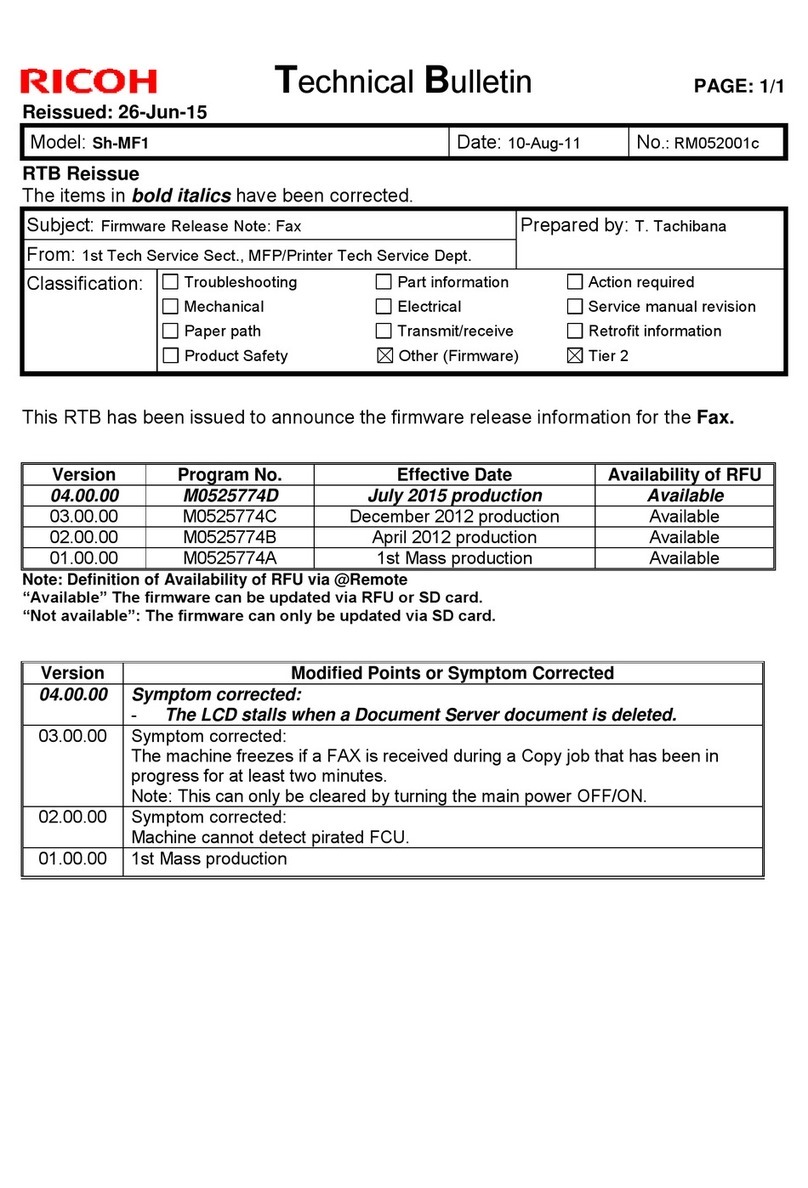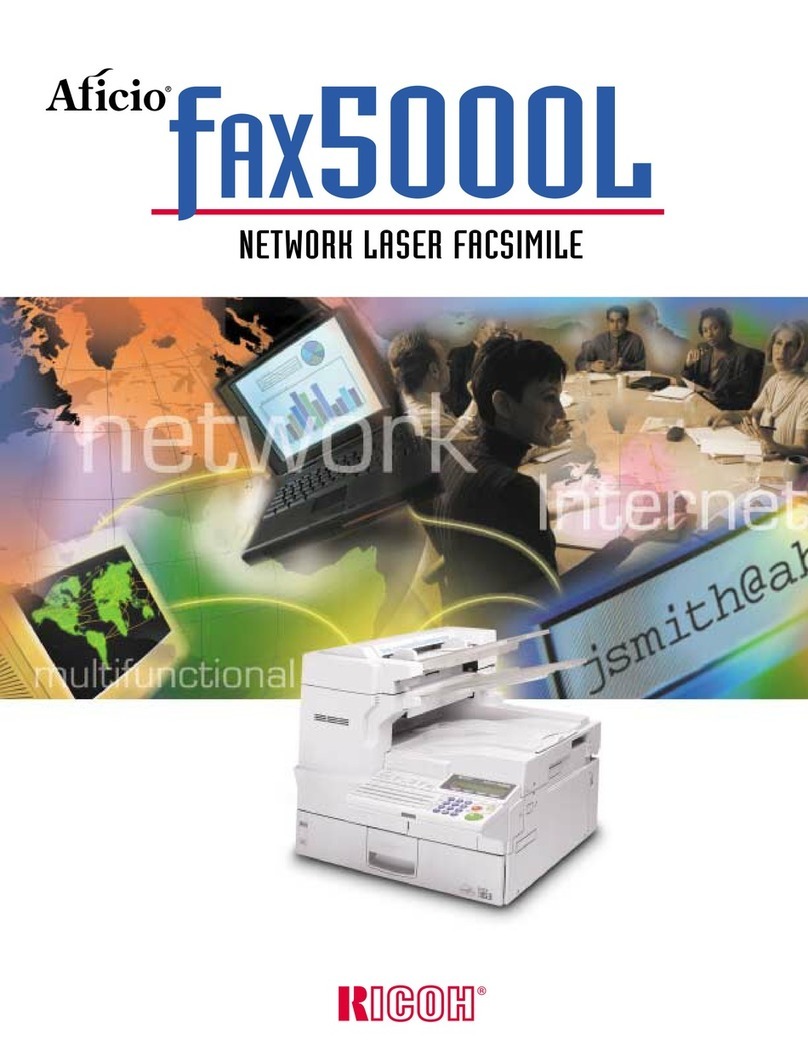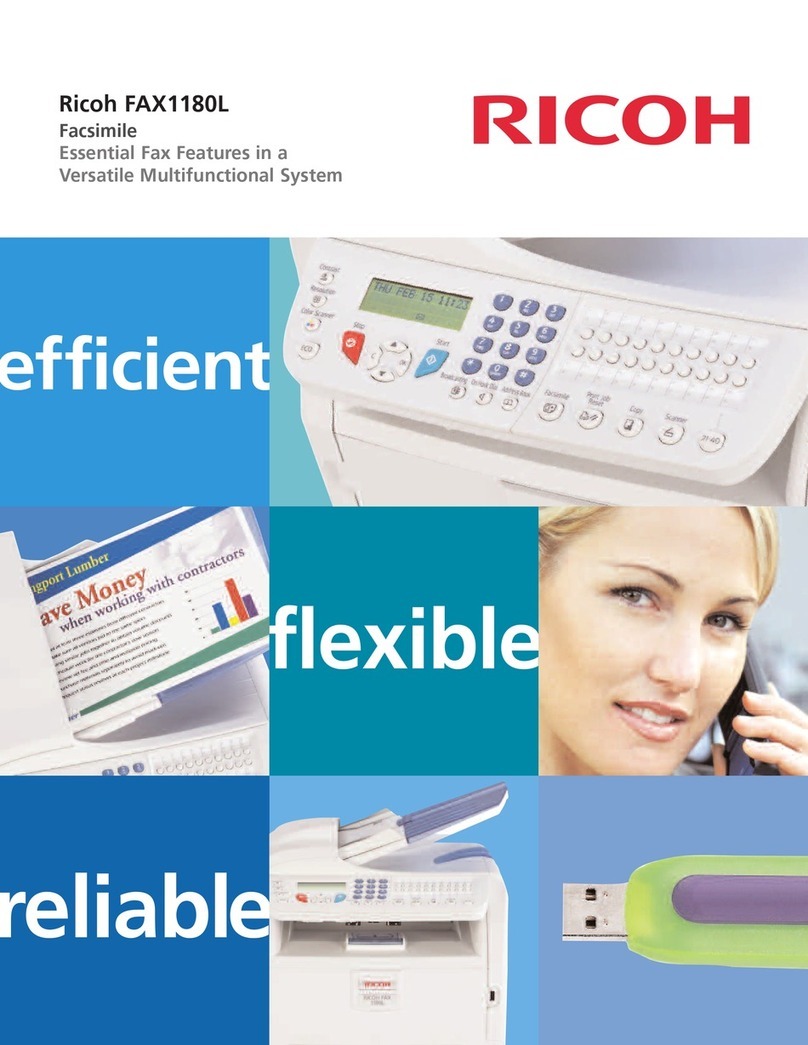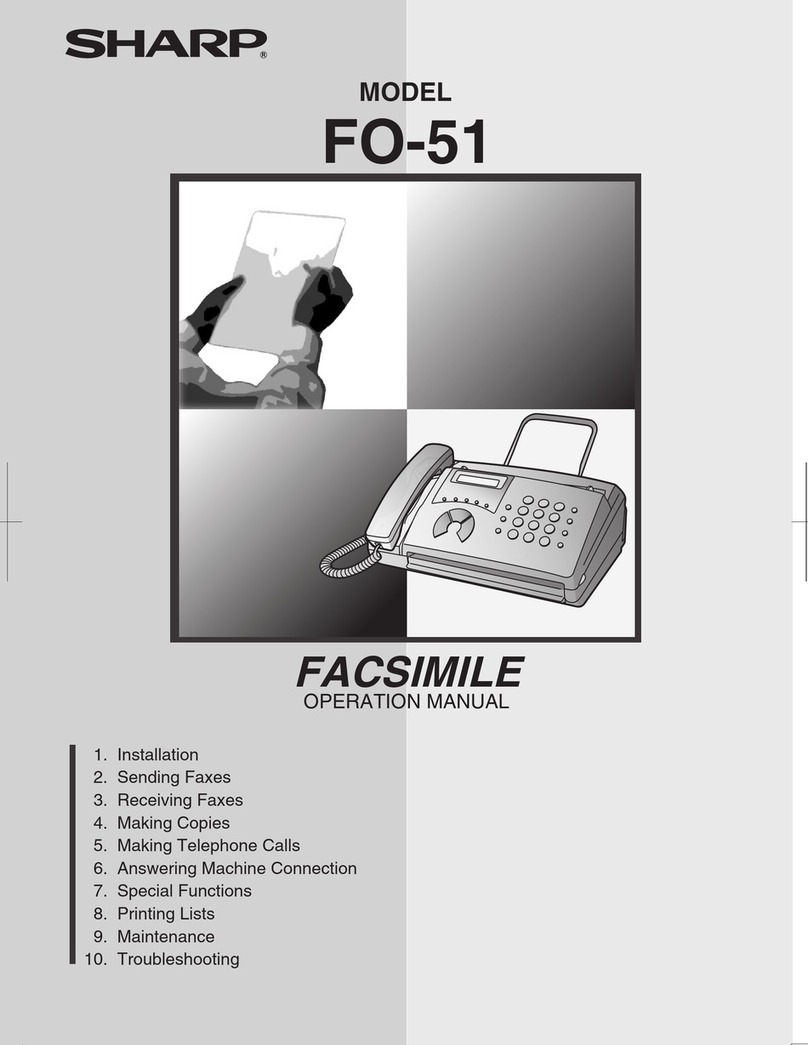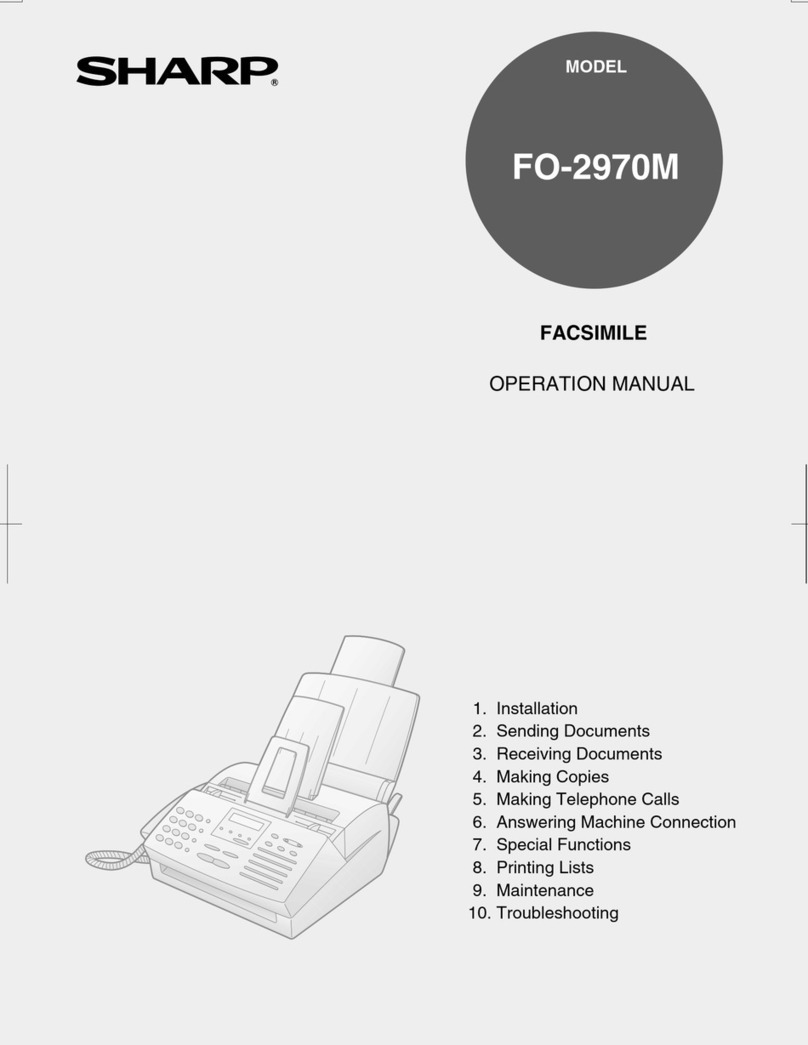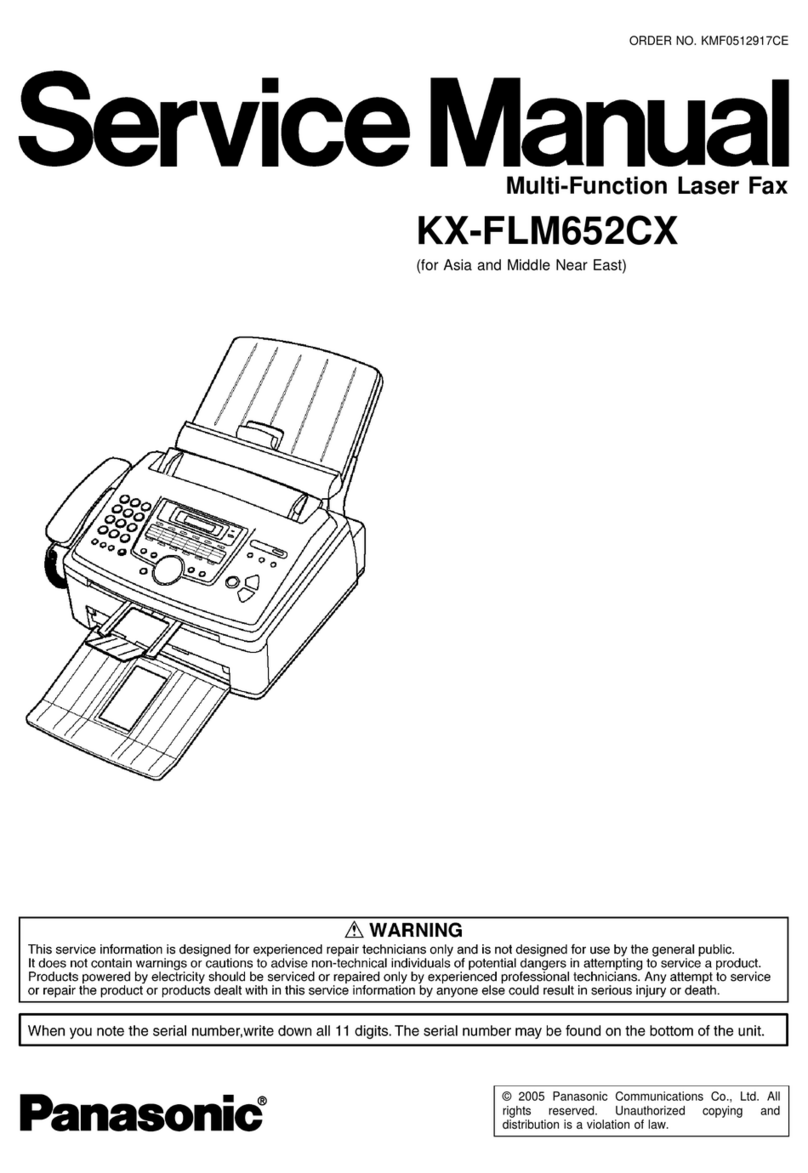i
TABLE OF CONTENTS
INSTALLATION ............................................................................... 1-1
1.1 FAX UNIT..................................................................................................1-1
1.1.1 CAUTIONS.......................................................................................1-1
1.1.2 FAX OPTION INSTALLATION .........................................................1-2
1.1.3 INSTALLING THE HANDSET ..........................................................1-4
1.2 FAX UNIT OPTIONS.................................................................................1-5
1.2.1 G3 INTERFACE UNIT INSTALLATION............................................1-5
1.2.2 ISDN OPTION INSTALLATION........................................................1-7
1.2.3 FAX FUNCTION UPGRADE UNIT INSTALLATION.........................1-9
1.2.4 EXPANSION MEMORY INSTALLATION.......................................1-10
2. TROUBLESHOOTING ................................................................ 2-1
2.1 ERROR CODES........................................................................................2-1
2.2 ERROR CODES FOR THE ISDN OPTION...............................................2-9
2.2.1 D-CHANNEL LAYER MANAGEMENT ...........................................2-10
2.2.2 D-CHANNEL, LAYER 1..................................................................2-10
2.2.3 D-CHANNEL LINK LAYER.............................................................2-10
2.2.4 D-CHANNEL NETWORK LAYER...................................................2-11
2.2.5 B-CHANNEL LINK LAYER.............................................................2-11
2.2.6 B-CHANNEL NETWORK LAYER...................................................2-12
2.2.7 TRANSPORT LAYER.....................................................................2-12
2.2.8 SESSION LAYER...........................................................................2-13
2.2.9 DOCUMENT LAYER......................................................................2-14
2.2.10 PRESENTATION LAYER.............................................................2-14
2.3 FAX SC CODES......................................................................................2-15
2.3.1 OVERVIEW ....................................................................................2-15
2.3.2 SC1201...........................................................................................2-15
2.3.3 SC1207...........................................................................................2-15
2.3.4 FAX SC CODE TABLE...................................................................2-16
2.4 ISDN TEST FUNCTION ..........................................................................2-17
2.4.1 LEDS..............................................................................................2-17
2.4.2 BACK-TO-BACK TEST...................................................................2-18
3. SERVICE TABLES...................................................................... 3-1
3.1 SERVICE PROGRAM MODE....................................................................3-1
3.1.1 SERVICE PROGRAM MODE OPERATION.....................................3-1
Entering and Exiting SP mode..............................................................3-1
SP Mode Button Summary ...................................................................3-2
Switching Between SP Mode and Copy Mode for Test Printing ...........3-3
Selecting the Program Number.............................................................3-3
3.1.2 SERVICE PROGRAM MODE TABLES............................................3-4
3.2 BIT SWITCHES.........................................................................................3-9
3.2.1 SYSTEM SWITCHES.......................................................................3-9
3.2.2 SCANNER SWITCHES..................................................................3-22
3.2.3 PRINTER SWITCHES....................................................................3-26
